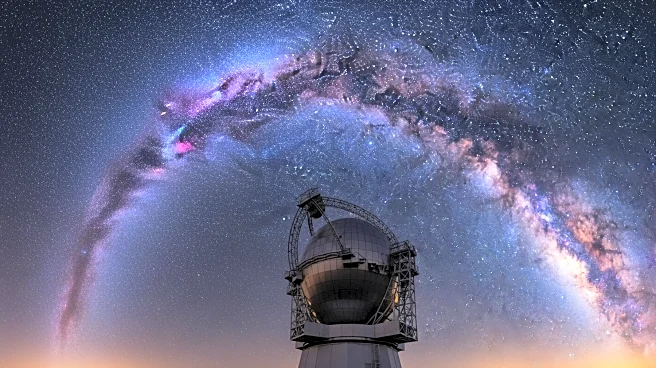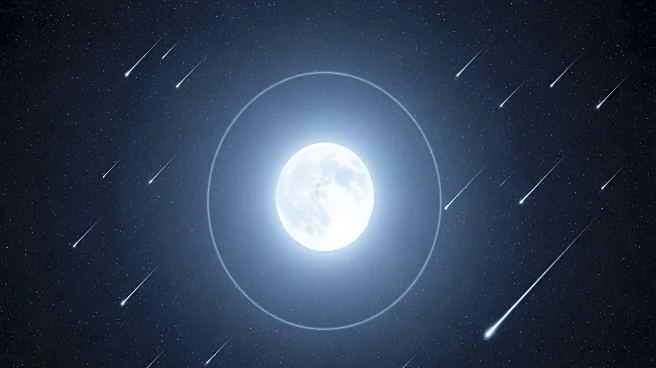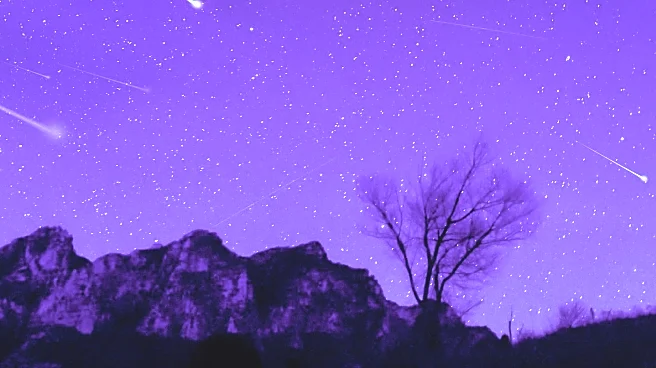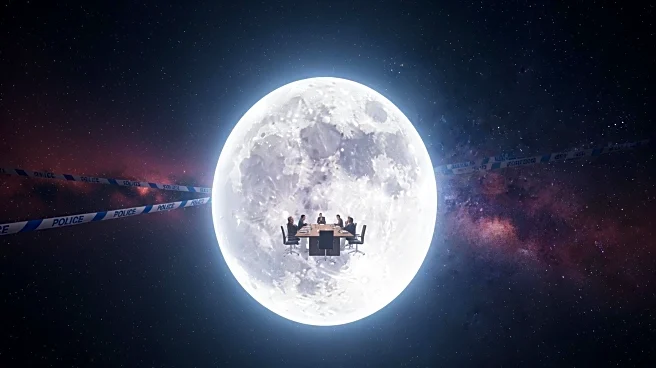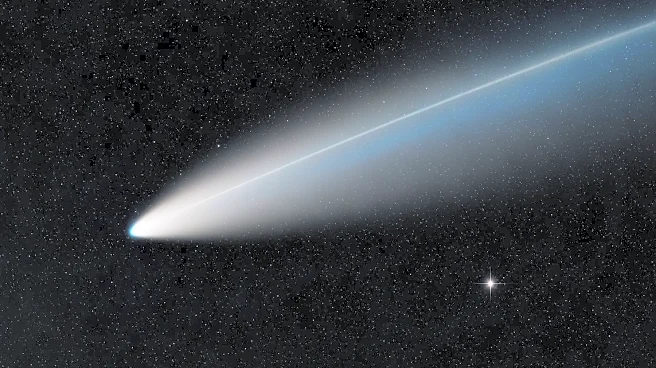What's Happening?
A stunning image of the Milky Way arcing over the Very Large Telescope (VLT) in Chile's Atacama Desert has been captured, showcasing the beauty of the night sky. The VLT, operated by the European Southern
Observatory, is a leading astronomical instrument used to explore distant galaxies. The image also features a natural phenomenon known as airglow, which is visible due to the remote location's minimal light pollution. This glow results from chemical reactions in Earth's upper atmosphere, creating a subtle green and red tint.
Why It's Important?
The image underscores the importance of preserving dark sky sites like the Atacama Desert, which are crucial for astronomical research. Light pollution from urban expansion and satellite constellations threatens these sites, potentially hindering scientific discoveries. The VLT's location allows for unparalleled observations of the cosmos, contributing to our understanding of the universe. Protecting these areas is vital for continued advancements in astronomy and maintaining the cultural and scientific value of observing the natural night sky.
Beyond the Headlines
The increasing threat of light pollution raises ethical and environmental concerns about the impact of human activities on natural environments. Efforts to protect dark sky sites involve balancing development with conservation, highlighting the need for sustainable practices. The preservation of these sites not only benefits scientific research but also supports cultural heritage and public appreciation of the night sky. This issue calls for international cooperation to implement policies that mitigate light pollution and safeguard these invaluable resources.
